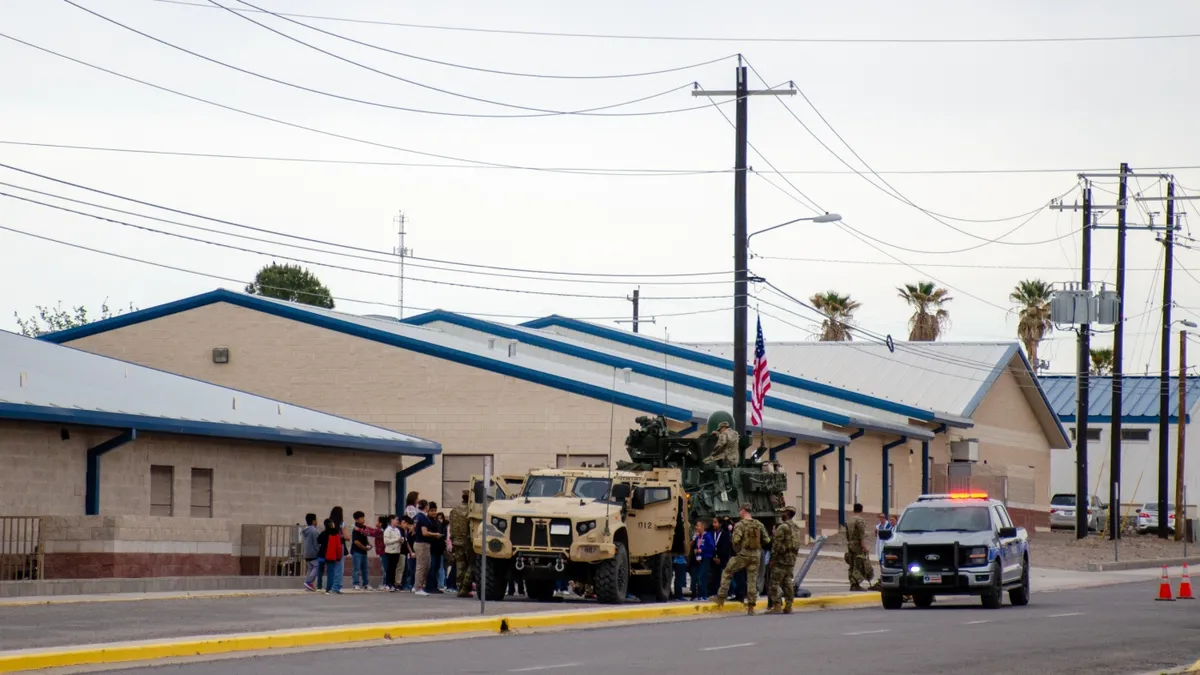
PRESIDIO, Texas — Nestled along the southwest border, the small town of Presidio, with a population of approximately 6,000, is experiencing a profound transformation. The Trump administration has deployed around 10,000 active-duty soldiers to bolster security measures aimed at curbing irregular crossings into the United States. Local resident Anibal Galindo expresses concerns over this military presence, likening the town's atmosphere to a "military zone" rather than a peaceful community. Galindo, a lifelong resident, emphasizes that the region is already well-equipped with law enforcement agencies, including local police, state officers, and the U.S. Border Patrol.
The town is not unfamiliar with surveillance, featuring numerous traffic checkpoints and advanced monitoring systems, including surveillance towers and a large blimp capable of detecting suspicious low-flying aircraft within a 200-mile radius. Galindo points out the existing security measures, questioning the necessity of additional military personnel. "The surveillance is here," he states. "So what else do you want?"
Presidio falls within the Big Bend sector of the U.S. Customs and Border Protection, an area that spans more than 500 miles along the Rio Grande and includes several other small towns and a national park. Recently, the Trump administration announced the deployment of approximately 500 active-duty soldiers to further strengthen security in this region. Major Jared Stefani, who oversees the Big Bend area deployment, clarified that these soldiers will not engage in arresting individuals suspected of being in the U.S. illegally. Instead, their role is to provide logistical support to Border Patrol agents.
During a press conference in March, Major Stefani explained, "We will not be actively on patrols. We'll be at detection and monitoring sites to provide that information to the Border Patrol to then go out and do their law enforcement function." This approach aims to enhance the existing capabilities of border enforcement without directly engaging in law enforcement activities.
Judge Joe Portillo, the highest-ranking official in Presidio County, expressed his support for the military's presence, despite the low numbers of border arrests in the area. According to U.S. Customs and Border Protection, there were only 165 encounters recorded in February. Portillo highlighted that Presidio has not faced the same influx of illegal crossings as other border towns like San Diego, Nogales, Arizona, or El Paso, making the military's presence a proactive measure rather than a response to a crisis.
There has been a significant decline in the number of individuals crossing the U.S.-Mexico border, a trend that began last year after reaching a record high toward the end of 2023. This reduction has continued since Donald Trump's administration took office. However, Lloyd Easterling, the chief border patrol agent for the area, asserts that the Army's presence remains crucial. "The troops are giving us those additional eyes and ears out there to not only secure the border but figure out when and where people came through," Easterling stated.
As part of the military's deployment to this rugged terrain, the Army is utilizing Stryker vehicles, which are 19-ton combat vehicles with eight wheels, previously employed in Iraq and Afghanistan. The introduction of these armored vehicles signifies a new phase in the government's approach to border security. The Trump administration has actively promoted their use, sharing visuals of the vehicles stationed along the border. "We want people to see where they are because it's a method of deterrence," Easterling remarked in March.
In conclusion, the military deployment in Presidio represents a significant shift in border security strategy, combining existing law enforcement efforts with enhanced military support and advanced technology. As the situation continues to evolve, local residents and officials alike are observing the impact of these measures on their community.